Ward-Burton-profile-3
Do you have any thoughts on this post?
On Tuesday, TRCP joined America’s hunters and anglers in celebrating the passage of the bipartisan EXPLORE Act in the House of Representatives by a unanimous vote.
The EXPLORE Act is a first of its kind recreation package that would improve access to the outdoors and modernize recreation infrastructure.
Originally introduced by House Natural Resources Committee Chairman Bruce Westerman (R-AR) and Ranking Member Raul Grijalva (D-AZ), The EXPLORE Act is a comprehensive legislative package that would expand access opportunities to a variety of public land users, streamline permitting processes for businesses focused on providing recreation opportunities, and modernize outdoor infrastructure.
“The way Americans recreate is changing at break-neck speeds,” said Becky Humphries, president and CEO of the Theodore Roosevelt Conservation Partnership. “The EXPLORE Act will ensure that our agencies and the public have the tools they need to keep up with the dynamic recreation patterns of our nation. TRCP applauds the House’s passage of the EXPLORE Act and looks forward to the advancement of this important bipartisan legislation.”
Along with including provisions of the Simplifying Outdoor Access for Recreation Act, which would streamline recreational permitting for guides and outfitters, the EXPLORE Act would:
The EXPLORE Act now heads to the Senate where the bill will be considered alongside the Senate’s recreation package: the bipartisan America’s Outdoor Recreation Act.
The TRCP is your no-B.S. resource for all things conservation. In our weekly Roosevelt Report, you’ll receive the latest news on emerging habitat threats, legislation and proposals on the move, public land access solutions we’re spearheading, and opportunities for hunters and anglers to take action. Sign up now.
Dam removals alone cannot bring river herring back to southern New England; their loss hurts striped bass, tuna, bluefish, and many bird and wildlife species
While driving home last week from a public meeting in Buzzards Bay, Mass., to gather information about Atlantic herring management, there were two very prominent thoughts in my mind. Number one: There is an incredibly diverse set of user groups who rely on Atlantic herring and river herring in southern New England, both directly and indirectly; and number two: These are some of the most passionate people I have ever been around.
The participants of the scoping meeting, held by the New England Fishery Management Council as they flesh out Amendment 10 to the Atlantic Herring Fisheries Management Plan (FMP), were made up of commercial fisherman, tribal members and tribal staff, recreational anglers, town municipal employees, nonprofit organizations, volunteers tasked with springtime river herring counts, previous council staff, and even a musician from Martha’s Vineyard who holds river herring in such high regard he writes songs about them. The group was diverse, but the message was very clear: Everyone wants the Atlantic herring population to have a chance to rebound, and they want streams and rivers to run silver with river herring again each spring.
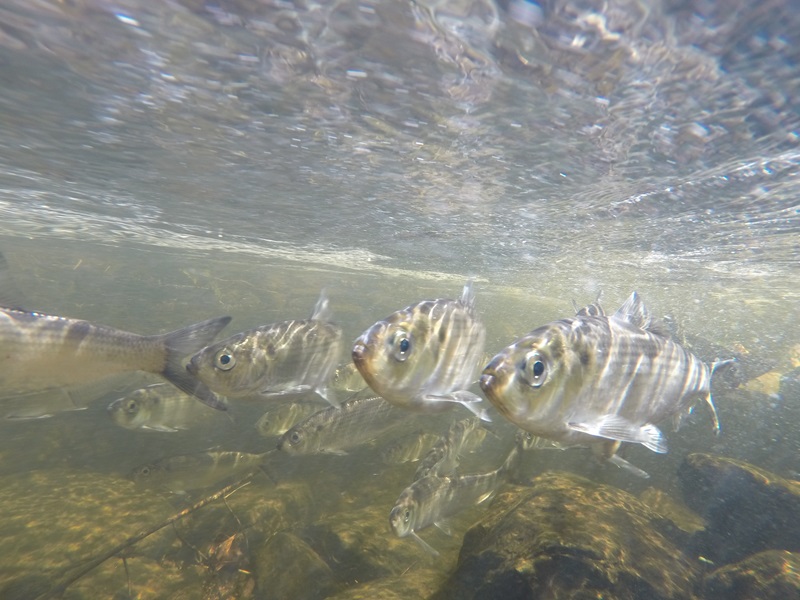
What Is Amendment 10? How Does It Relate to River Herring?
The NEFMC is currently working to prioritize the development of new management measures through Amendment 10, an amendment to the existing Atlantic Herring Fishery Management Plan, to address ongoing stakeholder concerns and user conflict, attain optimum yield in the fishery, and improve river herring conservation. The council is exploring a number of management alternatives to minimize conflict, including seasonal and coastal area restrictions or closures and new possession limits. Like so many other attendees at last week’s meeting, I wanted to be sure they specifically consider the impacts of the fishery on river herring species – which include blueback herring and alewife – and on a similar species, American shad.
As a southern New England native, a self-labeled “river herring nut,” and the river herring biologist for the State of Connecticut, the desire for streams and rivers to run silver again in spring rang especially near and dear to my heart. Nineteen of the 26 individuals who spoke in favor of making conservation changes to the Atlantic Herring FMP also spoke to the importance of river herring to their communities, their ways of life, and to the ecosystems in their areas. They gave passionate testimony to the loss of these fish in their local spawning runs over the last two decades and provided detailed comments on the negative effects this loss has had on their lives and the environment around them.
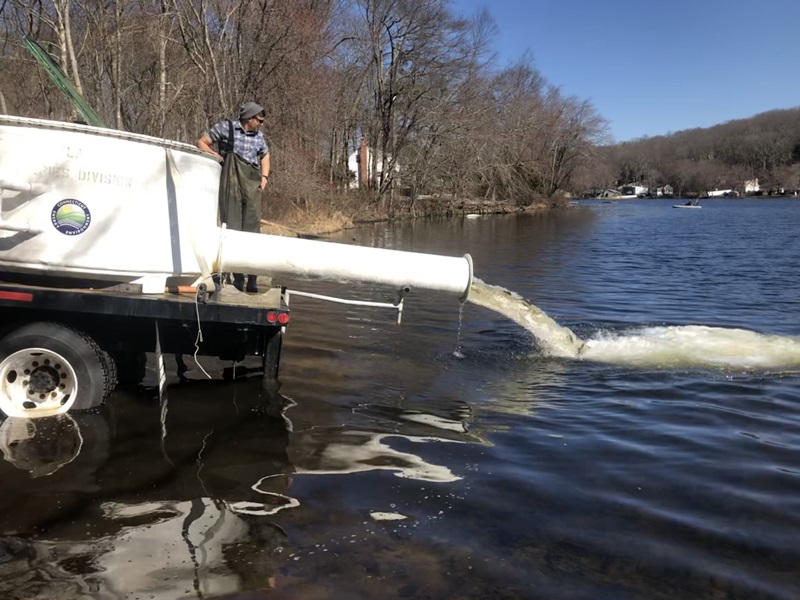
Stakeholders also explained why protecting these fish matters so much to them, and they provided solutions across the range of alternatives provided by the NEFMC to protect and enhance river herring populations. Some spoke to instituting time/area closures for Atlantic herring fisheries to protect river herring that were entering nearshore ocean waters when preparing to spawn, while others suggested reinstating a full-year buffer zone that would push Atlantic herring trawlers out to some distance from shore indefinitely.
There is good reason for these requests. Between 2014 and 2023, some 943 metric tons of river herring/shad bycatch were reported across the Gulf of Maine, Cape Cod, and Southern New England catch cap areas. Of this roughly 2 million pounds of bycatch, 75 percent (or over 7 million river herring, based on average fish weight) originated from the Southern New England Catch Cap area, from south of Cape Cod through Massachusetts, Rhode Island, Connecticut, New York and beyond. In stark contrast, only 17 percent came from the Cape Cod catch cap area and only just 8 percent came from the Gulf of Maine catch cap area.
This offers strong evidence that an existing time area closure for Management Area 1A off northern New England – which is basically a non-fishing buffer zone for Atlantic herring midwater trawlers – protects the majority of the river herring in that region between January and June, while the river herring are staging up to spawn in those rivers. The resulting 12 million-plus river herring that migrated into Maine’s waterways this year tell the rest of the story. Management Area 2, off southern New England, currently lacks similar protections, and is therefore suffering from historically low returns.
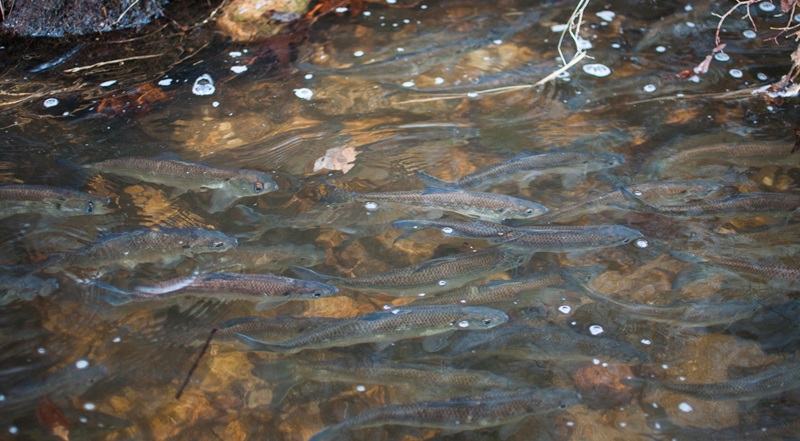
Why You Should Care About River Herring
Throughout the public testimony portion of last week’s meeting, many other comments were made about river herring protections, and they all ended up in the same place. These user groups all wanted the council to take actions to enhance river herring avoidance in the Atlantic herring fishery and take other river herring catch reduction measures to better support ongoing coastwide restoration efforts for river herring. The commenters all appeared to truly and deeply care about these fish, like so many of us do along the Atlantic coast, for a range of reasons. I commend the NEFMC for giving everyone from the public who cares about restoring river herring not just a voice, but also a place to be heard. Last week, like at other scoping meeting venues this spring, was an incredibly important night for Atlantic herring and southern New England’s river herring, but it was also a very special night for those of us who have built our lives around these incredible fish.
What do I mean by that, and why should you also care about river herring? These fish provide an important food source for many fish and wildlife species, including economically valuable sportfish like striped bass, tuna, and bluefish and charismatic birds like ospreys, herons, and eagles. They also fuel recreation and tourism economies and maintain functioning ecosystems, and can serve as a valuable food and bait source themselves in areas with healthy populations.
Since the year 2000, tens of millions of dollars have been spent on restoring and reconnecting river herring spawning habitats in southern New England through water quality projects, dam removals, and fish passage constructions, and yet their numbers continued to fall. In response, there has been a complete southern New England-wide ban on the recreational take of these fish for nearly two decades, and those who were told this closure would protect and bring the fish back watched as the numbers continued to fall, while populations to the north and south, with similar restrictions, continued to rise.
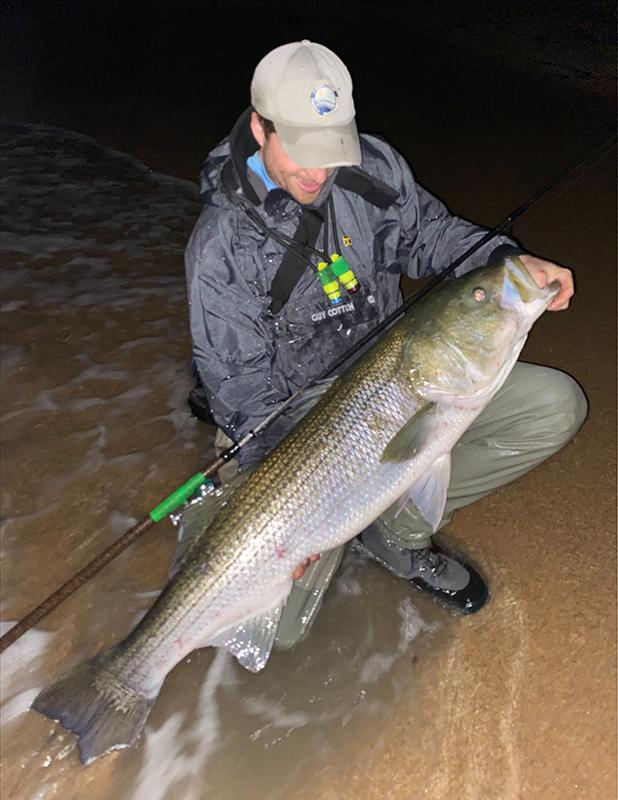
Individuals at the meeting spoke about this inability of freshwater infrastructure efforts alone to address the problem and lamented that they haven’t been able to keep one river herring in 18 years in Massachusetts. This despite the fact that the council’s Atlantic herring management plan still allows the Atlantic herring industry to take and profit from river herring caught incidentally as bycatch in the fishery.
This industrial take is limited by catch caps, but these catch caps still allow around 3.6 million river herring to be legally landed each year. Of this catch cap, 79 percent is allowed from the waters around southern New England and Cape Cod: the very areas currently suffering the most from poor river herring numbers. Similarly, the waters to the southeast of Nantucket, deemed the Georges Bank Catch Cap Area, has no cap on the number of river herring taken, allowing continuous commercial Atlantic herring fishing regardless of the number of river herring landed as bycatch. Couple this with incredibly low observer coverage to track the take of river herring, and the concerns of those in attendance last week are very clear.
One big question is on all our minds: Why does the area with the most severely depleted river herring currently allow the highest river herring landings?
What You Can Do
River herring populations in southern New England need your help, and your voice can still be heard by the NEFMC. With potential management measures designed to address the catch of shad and river herring in the directed Atlantic herring fishery, including revisiting catch caps and/or time/area closures included in the NEFMC’s Amendment 10 scoping documents, this is your chance to speak in person or write to the NEFMC in support of enhancing river herring avoidance and catch reduction in the Atlantic herring fishery.
Provide a personalized email comment to the council before April 30 or attend an in-person meeting in your state. Your input is vital if we want the NEFMC to best protect our herring resource.
Kevin Job, a native New Englander, is a fisheries biologist with the Connecticut Department of Energy and Environmental Protection. His work focuses on diadromous fishes including river herring and shad.
The Cervidae Peak Wildlife Overpass was built specifically to foster highway safety and accommodate wildlife
To the naked eye, Idaho State Highway 21 between Mile Post 19 and Mile Post 20 is a non-descript bend on a main route between Idaho’s largest city, Boise, and the state’s copious public lands and its high-country, wild heart.
To the Idaho Transportation Department and the Idaho Department of Fish and Game, however, that stretch of highway is the epicenter of ITD’s mission to provide safe passage for travelers and IDFG’s mission to preserve, protect, perpetuate, and manage Idaho’s wildlife resources for Idaho’s citizens.
It is there, at exactly mile 19.32, that transportation officials constructed the Cervidae Peak Wildlife Overpass. The first of its kind in Idaho, the overpass is a bridge built specifically to foster highway safety and accommodate wildlife. The overpass opened in November 2023, and based on photos from its first winter, it has been a roaring success.
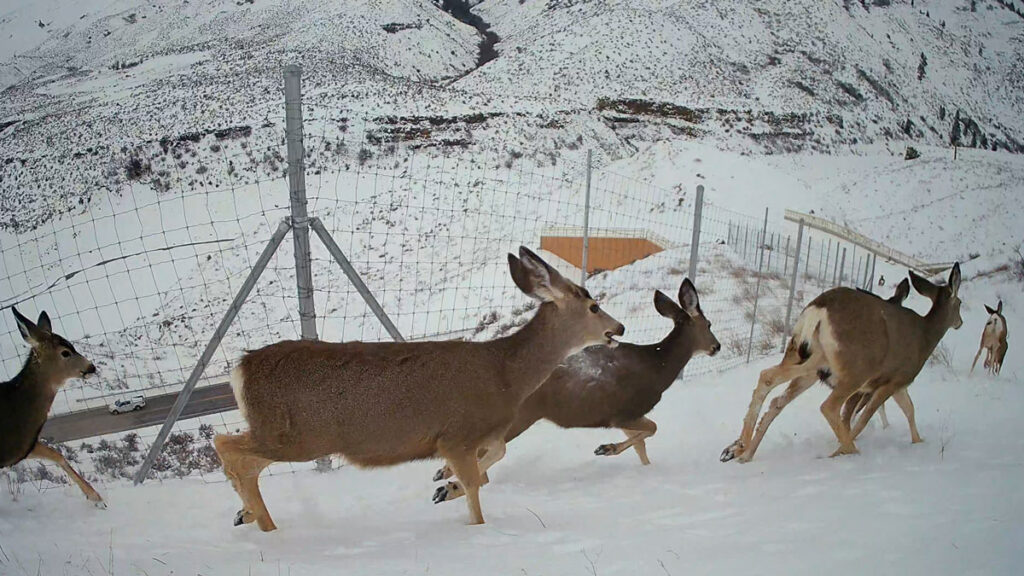
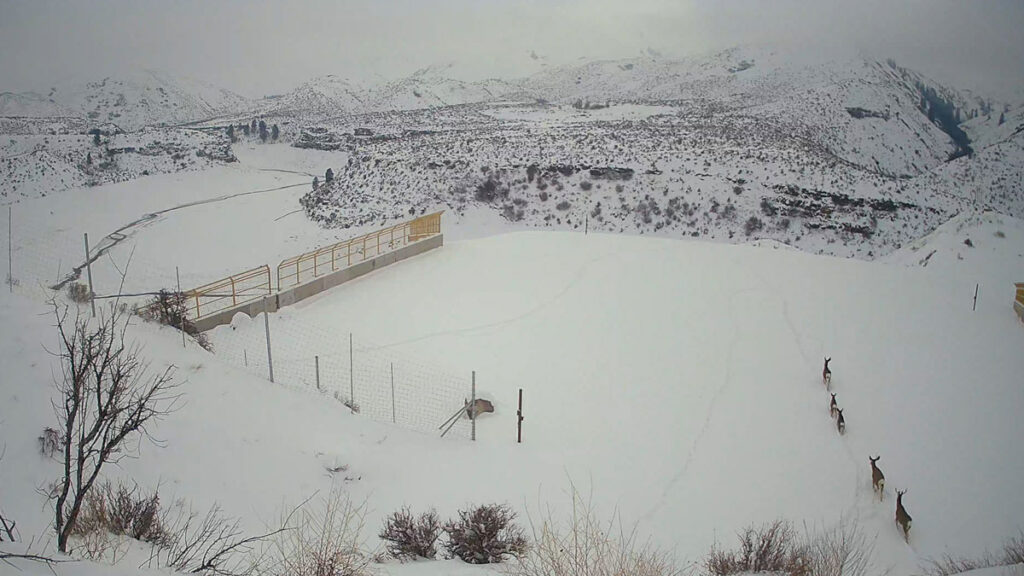
Once animals become more acclimated to the structure, transportation officials believe the bridge will reduce wildlife-vehicle collisions in this area by up to 80 percent.
This project is a win-win supported by a broad-based coalition of supporters including ITD, IDFG, the City of Boise, the Boise National Forest, the Bureau of Land Management, the U.S. Army Corps of Engineers, local businesses, non-government organizations, and a variety of interested citizens. The $7-million project was primarily funded by the Federal Highway Administration’s 2017 Idaho Federal Lands Access Program grant, and hunters contributed matching funds to the project through Pittman-Robertson money.
The wildlife crossing improves motorist safety by reducing risks of wildlife-vehicle collisions. In 2014, the National Highway Traffic Safety Administration reported that 158 people were killed and more than 10,000 injured in car crashes involving wildlife across the country. According to State Farm Insurance, there were more than 1.8 million animal collision insurance claims in the U.S. between July 1, 2022, and June 30, 2023. The average cost from July 2016 to June 2017 was $4,179 per claim. Damage costs have only risen in the last seven years.
An 80 percent reduction in wildlife-vehicle collisions is a major victory on a highway that will only grow busier as Idaho’s population continues to grow.
The wildlife crossing directly benefits the Boise River mule deer and elk herds and the hunters who chase them. Roughly 8,000 to 9,000 mule deer and 1,800 to 2,400 elk cross State Highway 21 twice annually to move between high country summer ranges and the winter range on the Boise River Wildlife Management Area and nearby public lands that surround Lucky Peak Reservoir.
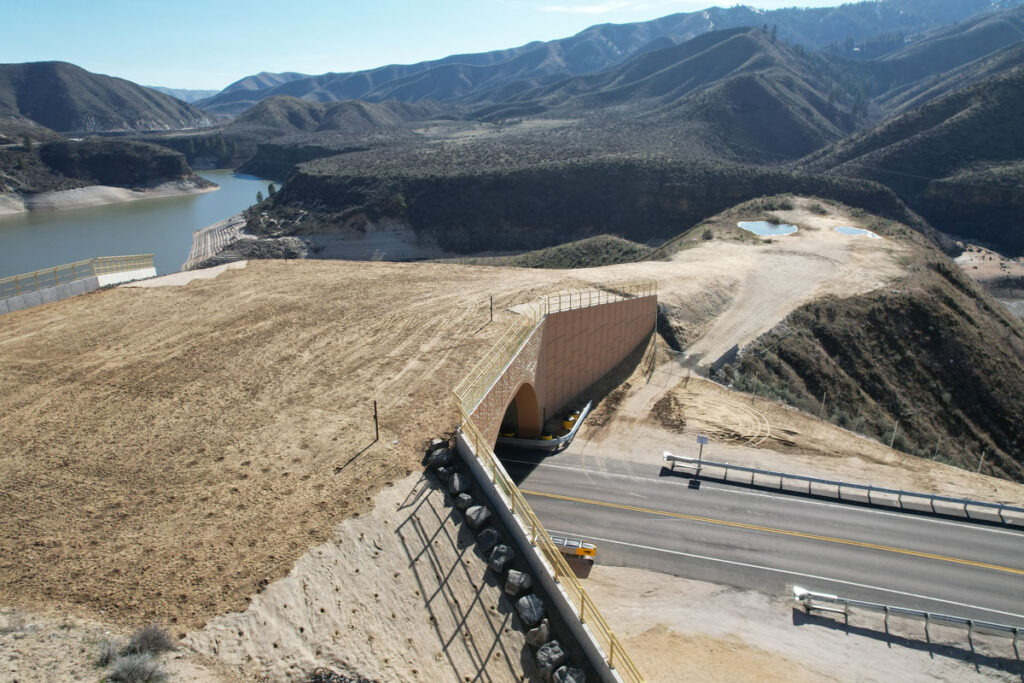
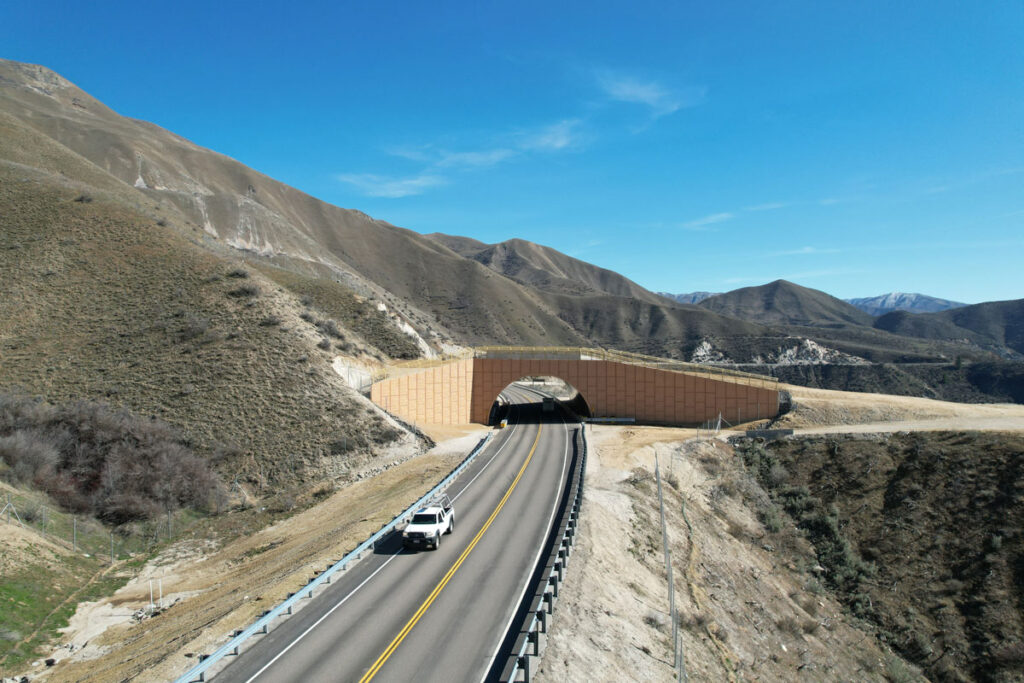
Conserving these migration corridors, which include stop-over areas and crucial winter ranges, is essential to the long-term viability of wildlife populations and the economies that survive on these resources. Accessing seasonal ranges is vital for the existence of sustainably-managed populations of big game animals.
The Cervidae Peak Wildlife Overpass is a key piece of infrastructure ensuring that future, and a prime example of positive collaboration between federal, state, and private conservation efforts.
Learn more about TRCP’s work in the Pacific Northwest HERE.
With Pennsylvania’s 2024 trout fishing season opener slated for this Saturday, the Theodore Roosevelt Conservation Partnership is sharing a short explainer video that highlights the problem of a growing backlog of streams that have been recommended for additional environmental designations, but have not yet received them.
The hunting and angling-focused conservation nonprofit will post the video (embedded below) on social media channels in its entirety on April 6, the Pennsylvania trout fishing opener, to ensure that anglers are aware of the issue.
Some trout streams that the state’s Fish and Boat Commission have designated as Wild Trout or Class A streams, and recommended for full protection to the Pennsylvania Department of Environmental Protection years ago, still haven’t received these safeguards. Thus there is a growing backlog of streams awaiting designation at the department. TRCP’s video will ensure that anglers are aware of the problem and urge officials to resolve the bottleneck in the process by describing it in an easy-to-understand structure.
“We want to ensure that everyday anglers are aware of how Pennsylvania’s streams and trout fishing opportunities are safeguarded, and how they can take actions to help protect their favorite waters,” said Alexandra Kozak, Pennsylvania field manager for the Theodore Roosevelt Conservation Partnership. “This is a somewhat complicated process, but with a single issue preventing the realization of full protections for many streams.”
In Pennsylvania, as in other states, TRCP works to build coalitions from the sporting and conservation communities to identify and work toward shared policy goals around conserving habitat and funding conservation programs. The organization seeks to advance public policy in the state’s General Assembly through strategic campaigns, grassroots organizing, and scientific research. This is accomplished by maintaining relationships with the Governor’s office, state agencies, hunting and fishing organizations, and regional and local businesses that help champion a hunting, fishing, and conservation-focused agenda.
Top issues TRCP focuses on in Pennsylvania include securing water quality protections for the state’s trout streams and the Chesapeake Bay watershed, ensuring legislative support for the outdoor recreation economy, defending hunter and angler access, and promoting the benefits of state-level conservation funding.
To learn more about TRCP’s conservation efforts in Pennsylvania, visit the organization’s webpage dedicated to state issues at trcp.org/pa.
You can also send DEP a message to clear the streams backlog through our simple comment form.
Banner Image Credit: Noah Davis
Theodore Roosevelt’s experiences hunting and fishing certainly fueled his passion for conservation, but it seems that a passion for coffee may have powered his mornings. In fact, Roosevelt’s son once said that his father’s coffee cup was “more in the nature of a bathtub.” TRCP has partnered with Afuera Coffee Co. to bring together his two loves: a strong morning brew and a dedication to conservation. With your purchase, you’ll not only enjoy waking up to the rich aroma of this bolder roast—you’ll be supporting the important work of preserving hunting and fishing opportunities for all.
$4 from each bag is donated to the TRCP, to help continue their efforts of safeguarding critical habitats, productive hunting grounds, and favorite fishing holes for future generations.
Learn More
